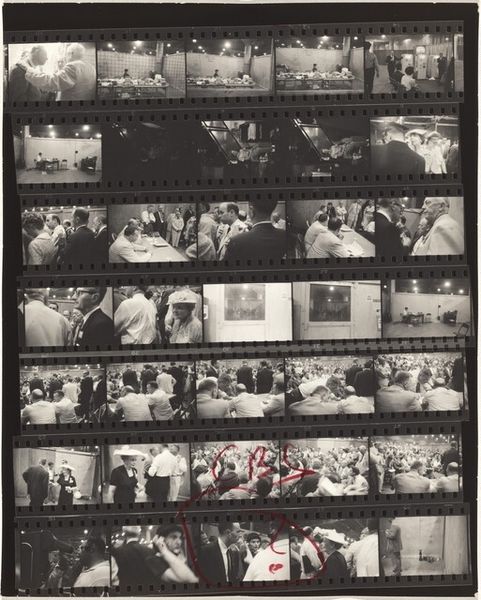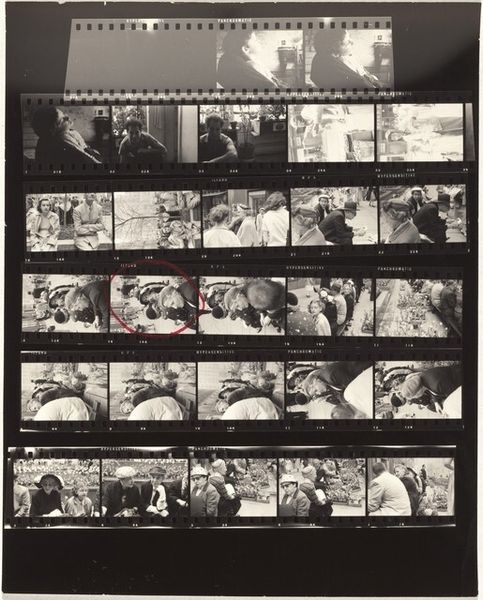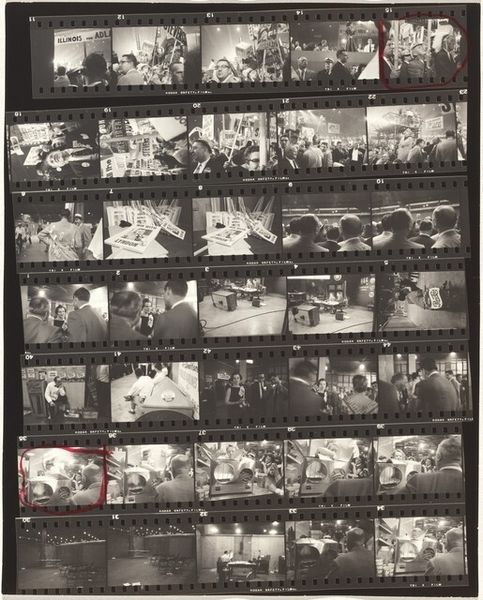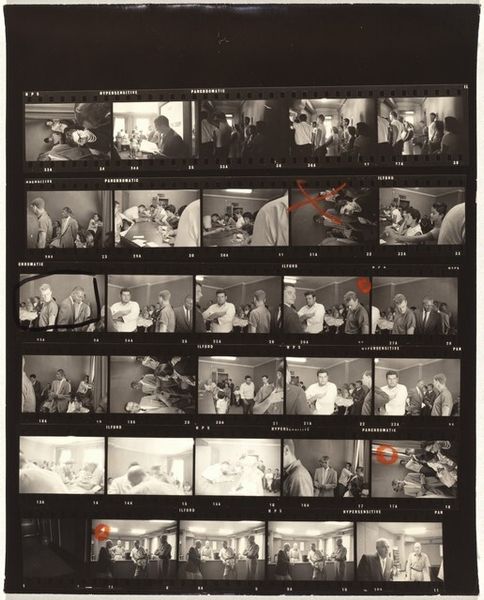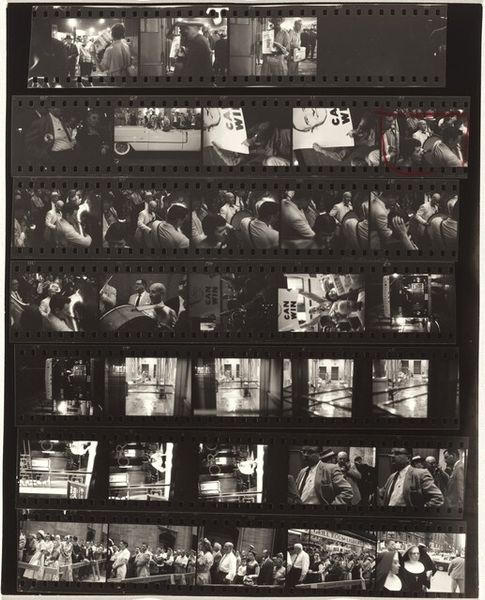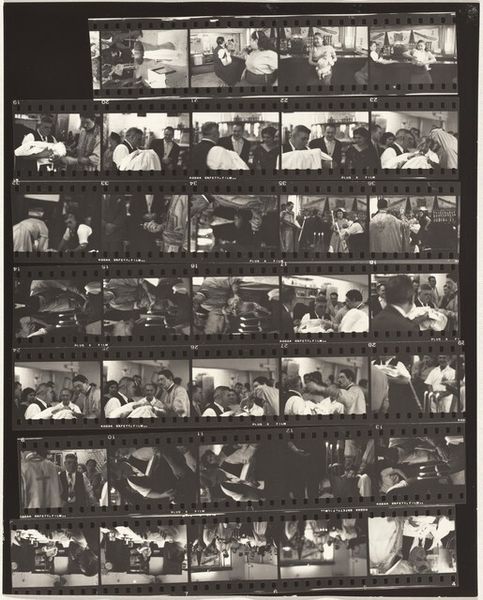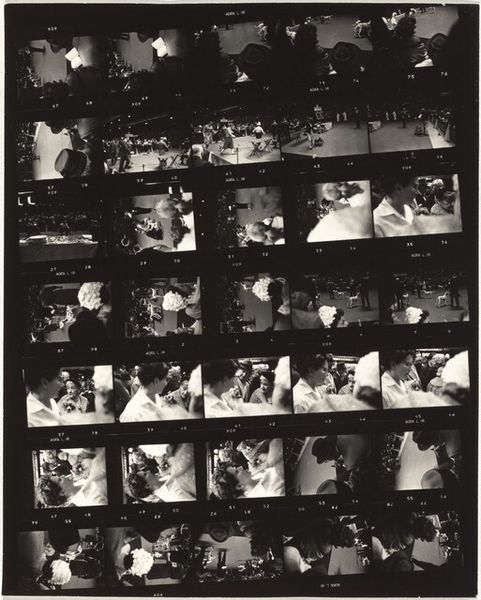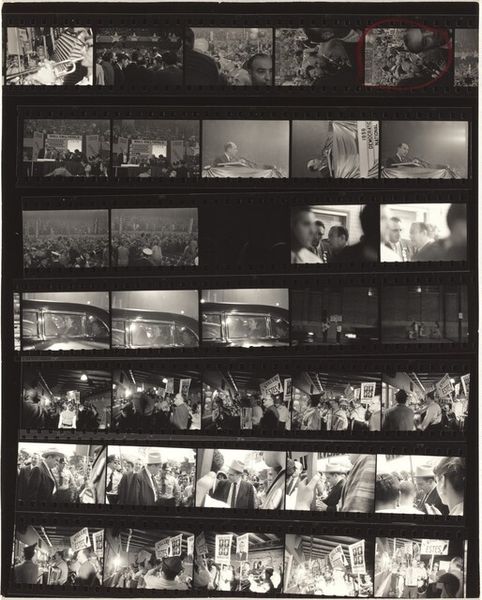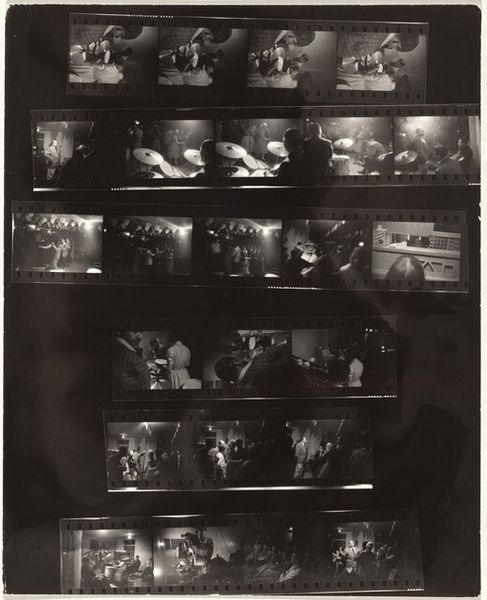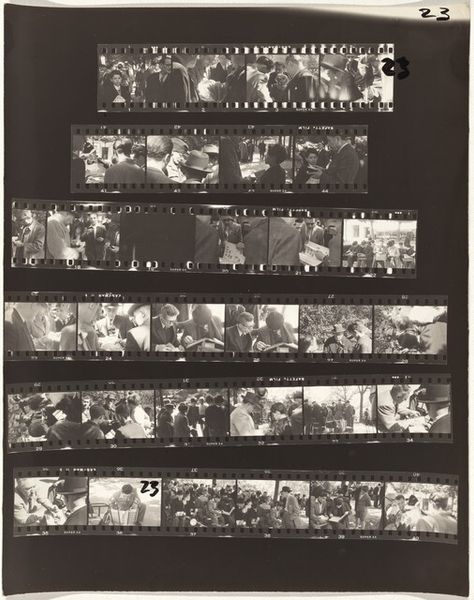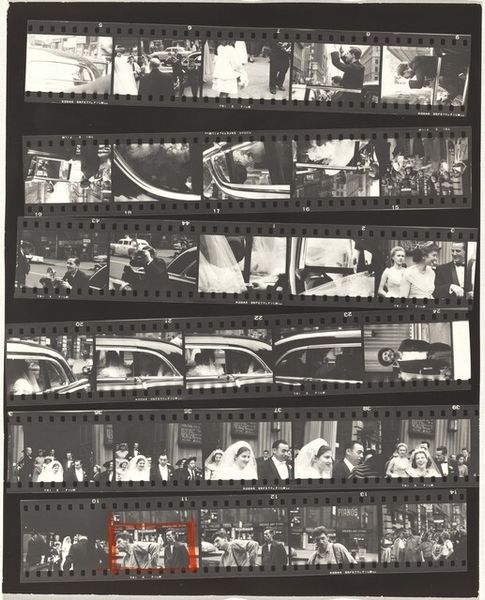
Dimensions: overall: 25.2 x 20.2 cm (9 15/16 x 7 15/16 in.)
Copyright: National Gallery of Art: CC0 1.0
Curator: This is Robert Frank's "Guggenheim 665--Reno, Nevada," a gelatin silver print from 1956. It presents us with a whole roll of negatives. Editor: The density is compelling! I see rows of candid moments, but without the polished veneer we often associate with mid-century America. A kind of raw immediacy strikes me here. Curator: That immediacy is key. Frank was deeply critical of American consumerism and racial inequalities. He captured ordinary people, often on the margins. In many ways he was working within a context of deeply engrained segregation. Editor: Tell me more about the context for these frames. It seems they capture multiple situations; what story does the film strip structure want to tell? How might its social position speak of material constraints and ways of observing the culture? Curator: As a whole, this photograph works by presenting fragments, a collection of instants lived and experienced. Some seem celebratory, like glimpses inside casinos, while others are just people going about their lives in Reno, but each section gives insight into an entire community. Editor: And you can feel this as much in the faces as you can the granular texture of the silver gelatin itself. It feels deliberately…unrefined. Was it commenting on contemporary commercial processes, the shiny optimism peddled by advertising culture? Curator: Precisely! Frank subverts those glossy images. He challenges the notion of a unified, happy America by highlighting the grit, the struggles, the overlooked. Here we see his project very clearly. Editor: These moments would not be easily captured today with a phone. What would it have been like for Frank to observe with a big, cumbersome machine? We lose track sometimes that materials like this mediate our observations, change them forever! Curator: Absolutely, the limitations become expressive choices, shaping his art, offering different means to address injustice and create alternative social narratives. Editor: The very method becomes the message, turning photographic documentation into a social commentary, offering new insights to ways in which American identity in that time. Curator: It gives you a lot to think about, the connection between visuality and ideology. Editor: Yes, what can be seen and the means for seeing.
Comments
No comments
Be the first to comment and join the conversation on the ultimate creative platform.
